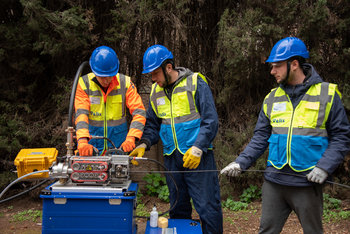
Thin Client vs Thick Client
The classic example of a thin client is a web browser. They aren't very interesting on their own but offer a wide range of functionality by connecting to a variety of web servers. Without a network connection, they offer limited functionality. The shift towards offering services using cloud platforms has also resulting in a shift towards thin clients. Many services are offered by a web browser or a specialized thin client such as a mobile app.Thick clients are characterized by software you install that generally works when you're offline. The term client suggests that they do connect to a server. For example, a game may run its primary engine locally to provide fast graphics and a responsive user interface. It may connect to a server to give a game a social dimension whereby you can play and communicate with other people.| Thin Client vs Thick Client | ||
Thin Client | Thick Client | |
Definition | Software that relies on a remote server such as a cloud platform for its features. | Software that runs at least some features directly on your device. |
Offline | Functions mostly don't work | Functions mostly work |
Local Resources | Generally consumes few local resources such as disk, computing power and memory. | Generally consumes more local resources |
Network Latency | Functionality may depend on a fast network connection. | Functionality may work without a connection or with a slow connection. |
Data | Data is typically stored on servers. | Data may be stored locally. |




























